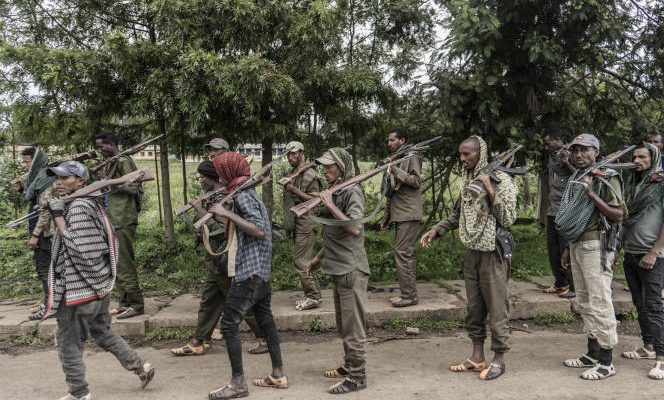A new wind of insurgency is blowing over Ethiopia. While the country is just emerging from two years of civil war in the province of Tigray (2020-2022), it is facing the beginning of a revolt with identical symptoms. This time, it is the neighboring region, Amhara (north-west), which is on the verge of implosion.
Tuesday, April 11, this province of 25 million inhabitants was under high tension, even paralyzed in some places. Clashes were taking place across the province and the capital, Bahir Dar, was rocked by an unclaimed explosion that killed two people. “The situation has deteriorated considerably […] leading to exchanges of fire, including heavy weapons”, writes the American embassy in a note. Like Bahir Dar, major towns such as Gondar and Dessie are blocked. A curfew is in place.
Clashes between Amhara militiamen – called Fanos – and the national army near the town of Kobo, 550 km north of Addis Ababa, left several militiamen dead. The exchange of fire also killed two Catholic Relief Service aid workers. Several sources described artillery fire in the area this weekend, but the information remained fragmented: telecommunications are severely disrupted and the area is inaccessible.
Demonstrations and desertions
At the origin of this surge of violence, the controversial plan of the Prime Minister, Abiy Ahmed, to dismantle the regional military forces throughout the country. These forces, called “Liyu Hail” act as special police under the orders of the region. Present in the eleven provinces since 2008, they are sometimes better trained and better armed than the Ethiopian army. In Amhara, it is estimated that they are several tens of thousands strong. By removing them, the government wants “to build a strong and centralized army capable of protecting the sovereignty and unity of the country”, as he put it in an April 6 statement.
In recent days, many Amhara Special Forces soldiers have joined the Fanos militias in the countryside
This decision caused an uproar in the Amhara region, where demonstrations follow one another. In recent days, many Amhara Special Forces soldiers have rejected the Prime Minister’s decision, deserting their barracks to join the Fanos in the countryside. Hone Mandefro, director of the Amhara Association of America (AAA), speaks of several thousand defectors. “There will be an insurrection if the federal government persists in its project of dismantling”, he warns. Several observers speak rather of a limited mutiny and not of a generalized revolt.
“The Amhara population can enter into resistance if they wish, assures Hone Mandefro. This project specifically targets us Amhara, because we are the only region to be demobilized”he believes. Indeed, the neighboring province of Tigray would still have a reservoir of more than 200,000 armed soldiers despite the promises of disarmament contained in the Pretoria peace agreement signed on November 2, 2022.
Amhara protesters fear that the disbanding of regional forces will make them more vulnerable to attacks from neighboring regions, and in particular Tigray, which Amhara militias have fought against during the civil war. They were then accused by the American Secretary of State, Antony Blinken, of having carried out a “ethnic cleansing”.
Conflicts in the Oromia region
The uprising by Amhara nationalists is anything but a surprise given the escalation that has pitted the region against the authorities in Addis Ababa for several months. Allies during the Tigray war, the Fanos and the federal government have since been engaged in a war of words.
“Abiy Ahmed has always been paranoid, he knows that the Amhara have great power when they are united, so he feels threatened”, says Hone Mandefro. This is not the first crackdown carried out by the government, which had arrested more than 9,000 Fanos militiamen in the Amhara region in May 2022.
Abiy Ahmed is of Oromo origin, the largest community in the country. The multiple ongoing conflicts in the Oromia region between the Oromo and the Amhara minorities are fueling tensions. According to the AAA, 1,566 Amhara were killed there last year because of their ethnicity. The latter accuse the Prime Minister of passivity, even of complicity in these crimes.
Newsletter
“The Africa World”
Every Saturday, find a week of news and debates, by the editorial staff of “Monde Afrique”
Register
For Abiy Ahmed, who has become popular again on the international scene since the signing of the Pretoria peace agreement, the weeks to come are proving perilous. Torn between the desire to continue his enterprise of forced march centralization and the danger of seeing the Amhara region escape him, he poses the threat of a new civil insurrection to the 115 million Ethiopians.
